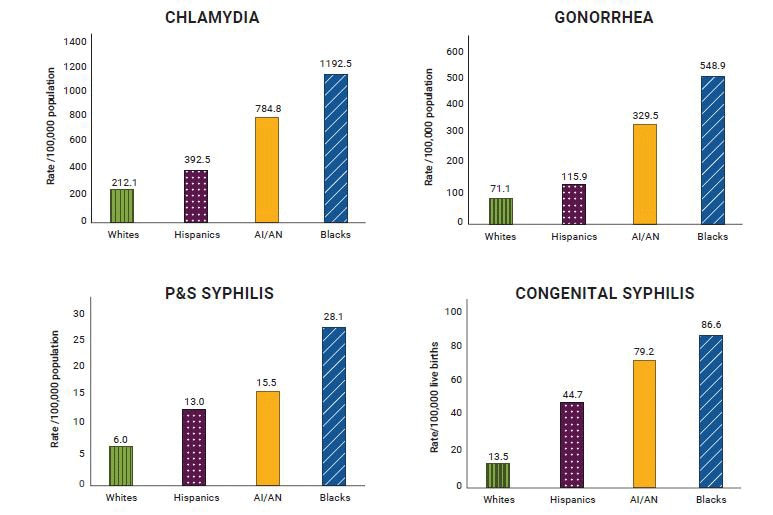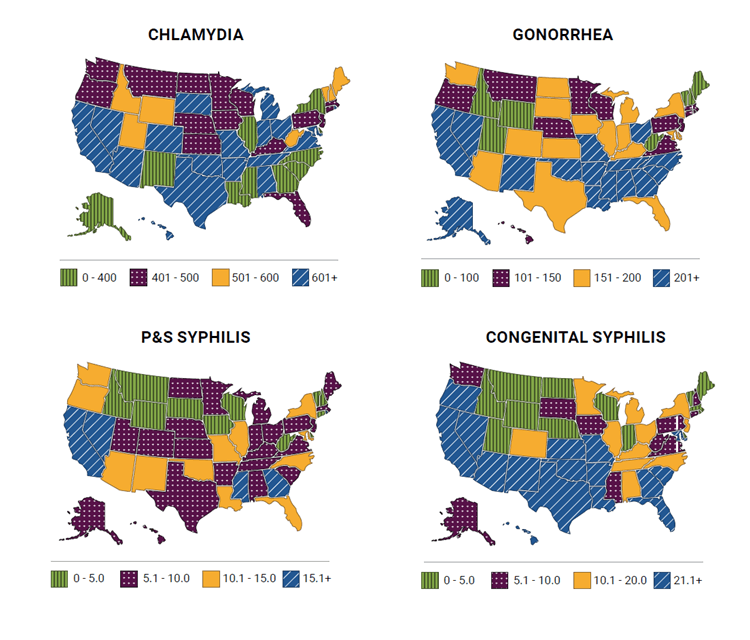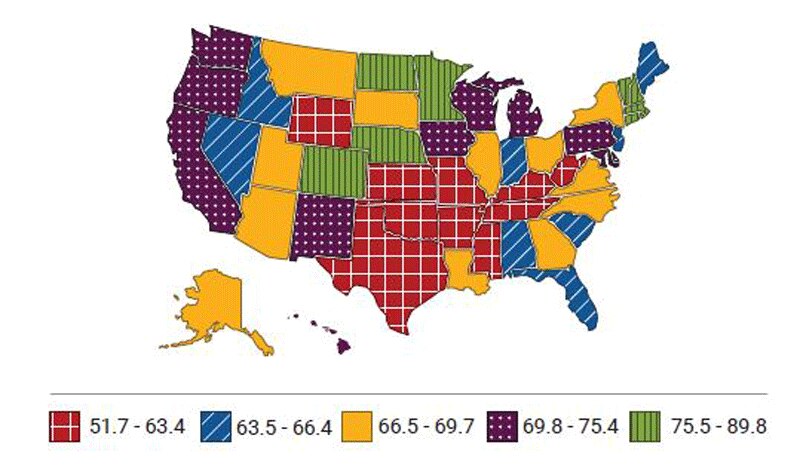Almost all epidemics impact some populations, communities, and geographic areas more than others, and STIs are no exception. The STI Plan recognizes this and focuses on these “priority populations.” By doing so, STI prevention and control efforts can be more efficient and effective, health disparities will be reduced, and these efforts will have the most impact on the health of the nation.
The STI Plan uses national level data to identify the populations most disproportionately impacted. However, it recognizes that stakeholders should look at the data for the populations they serve to determine who are the most impacted and focus their efforts accordingly.
The priority populations based on national level data are:
- Adolescents and young adults:
- In the United States, young people between the ages of 15–24 make up half of all new STIs, even though they represent only 25% of the sexually active population.
- Men who have sex with men (MSM):
- In 2018, more than 50% of primary and secondary syphilis infections occurred among MSM.
- Pregnant women:
- The rate of congenital syphilis (CS) cases increased 185% from 2014 to 2018. In 2018, 78 pregnancies ended in stillbirth and 16 infants died due to CS complications. CS can be prevented by screening and treating pregnant woman.
Within these priority populations, the plan notes that certain racial and ethnic minority communities (Blacks, American Indians/Alaska Natives, and Hispanics) and certain geographic regions (Southern and Western regions of the United States) are more impacted by STIs than others, based on the following data:
- Black, American Indian/Alaska Native, and Hispanic populations have higher rates of STIs than white populations.

Disparities in reported rates of STIs by race/ethnicity, 2018.
- The southern and western regions of the United States also have higher STI rates:
- Chlamydia rates are highest in the South.
- Gonorrhea rates are highest in the South and the West.
- Primary and secondary syphilis rates are highest in the West.
- Congenital syphilis rates are highest in the West.
- HPV vaccination rates are lowest in the South.

Rates of reported cases by state, per 100,000 population, 2018. For congenital syphilis, rates of reported cases by state, per 100,000 live births.

Percentage of adolescents (male and female, ages 13–17) who have received at least one dose of the HPV vaccine, 2018.
Learn more about the STI Plan or download the plan to read it.
